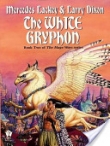
Текст книги "The British Study Edition of the Urantia Papers"
Автор книги: Tigran Aivazian
Жанр:
Религия
сообщить о нарушении
Текущая страница: 97 (всего у книги 295 страниц)
THE LAST GREAT MAMMALIAN MIGRATION
61:4.1 This is the period of preglacial land elevation in North America, Europe, and Asia. The land was greatly altered in topography. Mountain ranges were born, streams changed their courses, and isolated volcanoes broke out all over the world.
61:4.2 ¶ 10,000,000 years ago began an age of widespread local land deposits on the lowlands of the continents, but most of these sedimentations were later removed. Much of Europe, at this time, was still under water, including parts of England, Belgium, and France, and the Mediterranean Sea covered much of northern Africa. In North America extensive depositions were made at the mountain bases, in lakes, and in the great land basins. These deposits average only about 60 m, are more or less coloured, and fossils are rare. Two great fresh-water lakes existed in western North America. The Sierras were elevating; Shasta, Hood, and Rainier were beginning their mountain careers. But it was not until the subsequent ice age that North America began its creep toward the Atlantic depression.
61:4.3 For a short time all the land of the world was again joined excepting Australia, and the last great world-wide animal migration took place. North America was connected with both South America and Asia, and there was a free exchange of animal life. Asiatic sloths, armadillos, antelopes, and bears entered North America, while North American camels went to China. Rhinoceroses migrated over the whole world except Australia and South America, but they were extinct in the Western Hemisphere by the close of this period.
61:4.4 In general, the life of the preceding period continued to evolve and spread. The cat family dominated the animal life, and marine life was almost at a standstill. Many of the horses were still three-toed, but the modern types were arriving; llamas and giraffelike camels mingled with the horses on the grazing plains. The giraffe appeared in Africa, having just as long a neck then as now. In South America sloths, armadillos, anteaters, and the South American type of primitive monkeys evolved. Before the continents were finally isolated, those massive animals, the mastodons, migrated everywhere except to Australia.
61:4.5 ¶ 5,000,000 years ago the horse evolved as it now is and from North America migrated to all the world. But the horse had become extinct on the continent of its origin long before the red man arrived.
61:4.6 The climate was gradually getting cooler; the land plants were slowly moving southward. At first it was the increasing cold in the north that stopped animal migrations over the northern isthmuses; subsequently these North American land bridges went down. Soon afterwards the land connection between Africa and South America finally submerged, and the Western Hemisphere was isolated much as it is today. From this time forward distinct types of life began to develop in the Eastern and Western Hemispheres.
61:4.7 ¶ And thus does this period of almost 10,000,000 years’ duration draw to a close, and not yet has the ancestor of man appeared. This is the time usually designated as the Pliocene.
5. THE EARLY ICE AGE61:5.1 By the close of the preceding period the lands of the north-eastern part of North America and of northern Europe were highly elevated on an extensive scale, in North America vast areas rising up to 9 km and more. Mild climates had formerly prevailed over these northern regions, and the arctic waters were all open to evaporation, and they continued to be ice-free until almost the close of the glacial period.
61:5.2 Simultaneously with these land elevations the ocean currents shifted, and the seasonal winds changed their direction. These conditions eventually produced an almost constant precipitation of moisture from the movement of the heavily saturated atmosphere over the northern highlands. Snow began to fall on these elevated and therefore cool regions, and it continued to fall until it had attained a depth of 6 km. The areas of the greatest depth of snow, together with altitude, determined the central points of subsequent glacial pressure flows. And the ice age persisted just as long as this excessive precipitation continued to cover these northern highlands with this enormous mantle of snow, which soon metamorphosed into solid but creeping ice.
61:5.3 The great ice sheets of this period were all located on elevated highlands, not in mountainous regions where they are found today. 50% of the glacial ice was in North America, 25% in Eurasia, and 25% elsewhere, chiefly in Antarctica. Africa was little affected by the ice, but Australia was almost covered with the antarctic ice blanket.
61:5.4 The northern regions of this world have experienced six separate and distinct ice invasions, although there were scores of advances and recessions associated with the activity of each individual ice sheet. The ice in North America collected in two and, later, three centres. Greenland was covered, and Iceland was completely buried beneath the ice flow. In Europe the ice at various times covered the British Isles excepting the coast of southern England, and it overspread western Europe down to France.
61:5.5 ¶ 2,000,000 years ago the first North American glacier started its southern advance. The ice age was now in the making, and this glacier consumed nearly 1,000,000 years in its advance from, and retreat back toward, the northern pressure centres. The central ice sheet extended south as far as Kansas; the eastern and western ice centres were not then so extensive.
61:5.6 ¶ 1,500,000 years ago the first great glacier was retreating northward. In the meantime, enormous quantities of snow had been falling on Greenland and on the north-eastern part of North America, and ere long this eastern ice mass began to flow southward. This was the second invasion of the ice.
61:5.7 These first two ice invasions were not extensive in Eurasia. During these early epochs of the ice age North America was overrun with mastodons, woolly mammoths, horses, camels, deer, musk oxen, bison, ground sloths, giant beavers, sabre-toothed tigers, sloths as large as elephants, and many groups of the cat and dog families. But from this time forward they were rapidly reduced in numbers by the increasing cold of the glacial period. Toward the close of the ice age the majority of these animal species were extinct in North America.
61:5.8 Away from the ice the land and water life of the world was little changed. Between the ice invasions the climate was about as mild as at present, perhaps a little warmer. The glaciers were, after all, local phenomena, though they spread out to cover enormous areas. The coastwise climate varied greatly between the times of glacial inaction and those times when enormous icebergs were sliding off the coast of Maine into the Atlantic, slipping out through Puget Sound into the Pacific, and thundering down Norwegian fiords into the North Sea.
6. PRIMITIVE MAN IN THE ICE AGE61:6.1 The great event of this glacial period was the evolution of primitive man. Slightly to the west of India, on land now under water and among the offspring of Asiatic migrants of the older North American lemur types, the dawn mammals suddenly appeared. These small animals walked mostly on their hind legs, and they possessed large brains in proportion to their size and in comparison with the brains of other animals. In the 70th generation of this order of life a new and higher group of animals suddenly differentiated. These new mid-mammals – almost twice the size and height of their ancestors and possessing proportionately increased brain power – had only well established themselves when the Primates, the third vital mutation, suddenly appeared. (At this same time, a retrograde development within the mid-mammal stock gave origin to the simian ancestry; and from that day to this the human branch has gone forward by progressive evolution, while the simian tribes have remained stationary or have actually retrogressed.)
61:6.2 ¶ 1,000,000 years ago Urantia was registered as an inhabited world. A mutation within the stock of the progressing Primates suddenly produced two primitive human beings, the actual ancestors of mankind.
61:6.3 This event occurred at about the time of the beginning of the third glacial advance; thus it may be seen that your early ancestors were born and bred in a stimulating, invigorating, and difficult environment. And the sole survivors of these Urantia aborigines, the Eskimos, even now prefer to dwell in frigid northern climes.
61:6.4 ¶ Human beings were not present in the Western Hemisphere until near the close of the ice age. But during the interglacial epochs they passed westward around the Mediterranean and soon overran the continent of Europe. In the caves of western Europe may be found human bones mingled with the remains of both tropic and arctic animals, testifying that man lived in these regions throughout the later epochs of the advancing and retreating glaciers.
7. THE CONTINUING ICE AGE61:7.1 Throughout the glacial period other activities were in progress, but the action of the ice overshadows all other phenomena in the northern latitudes. No other terrestrial activity leaves such characteristic evidence on the topography. The distinctive boulders and surface cleavages, such as potholes, lakes, displaced stone, and rock flour, are to be found in connection with no other phenomenon in nature. The ice is also responsible for those gentle swells, or surface undulations, known as drumlins. And a glacier, as it advances, displaces rivers and changes the whole face of the earth. Glaciers alone leave behind them those telltale drifts – the ground, lateral, and terminal moraines. These drifts, particularly the ground moraines, extend from the eastern seaboard north and westward in North America and are found in Europe and Siberia.
61:7.2 ¶ 750,000 years ago the 4th ice sheet, a union of the North American central and eastern ice fields, was well on its way south; at its height it reached to southern Illinois, displacing the Mississippi River 80 km to the west, and in the east it extended as far south as the Ohio River and central Pennsylvania.
61:7.3 In Asia the Siberian ice sheet made its southernmost invasion, while in Europe the advancing ice stopped just short of the mountain barrier of the Alps.
61:7.4 ¶ 500,000 years ago, during the fifth advance of the ice, a new development accelerated the course of human evolution. Suddenly and in one generation the six coloured races mutated from the aboriginal human stock. This is a doubly important date since it also marks the arrival of the Planetary Prince.
61:7.5 In North America the advancing 5th glacier consisted of a combined invasion by all three ice centres. The eastern lobe, however, extended only a short distance below the St. Lawrence valley, and the western ice sheet made little southern advance. But the central lobe reached south to cover most of the State of Iowa. In Europe this invasion of the ice was not so extensive as the preceding one.
61:7.6 ¶ 250,000 years ago the 6th and last glaciation began. And despite the fact that the northern highlands had begun to sink slightly, this was the period of greatest snow deposition on the northern ice fields.
61:7.7 In this invasion the three great ice sheets coalesced into one vast ice mass, and all of the western mountains participated in this glacial activity. This was the largest of all ice invasions in North America; the ice moved south over 2,400 km from its pressure centres, and North America experienced its lowest temperatures.
61:7.8 ¶ 200,000 years ago, during the advance of the last glacier, there occurred an episode which had much to do with the march of events on Urantia – the Lucifer rebellion.
61:7.9 ¶ 150,000 years ago the 6th and last glacier reached its farthest points of southern extension, the western ice sheet crossing just over the Canadian border; the central coming down into Kansas, Missouri, and Illinois; the eastern sheet advancing south and covering the greater portion of Pennsylvania and Ohio.
61:7.10 This is the glacier that sent forth the many tongues, or ice lobes, which carved out the present-day lakes, great and small. During its retreat the North American system of Great Lakes was produced. And Urantian geologists have very accurately deduced the various stages of this development and have correctly surmised that these bodies of water did, at different times, empty first into the Mississippi valley, then eastward into the Hudson valley, and finally by a northern route into the St. Lawrence. It is 37,000 years since the connected Great Lakes system began to empty out over the present Niagara route.
61:7.11 ¶ 100,000 years ago, during the retreat of the last glacier, the vast polar ice sheets began to form, and the centre of ice accumulation moved considerably northward. And as long as the polar regions continue to be covered with ice, it is hardly possible for another glacial age to occur, regardless of future land elevations or modification of ocean currents.
61:7.12 This last glacier was 100,000 years advancing, and it required a like span of time to complete its northern retreat. The temperate regions have been free from the ice for a little over 50,000 years.
61:7.13 The rigorous glacial period destroyed many species and radically changed numerous others. Many were sorely sifted by the to-and-fro migration which was made necessary by the advancing and retreating ice. Those animals which followed the glaciers back and forth over the land were the bear, bison, reindeer, musk ox, mammoth, and mastodon.
61:7.14 The mammoth sought the open prairies, but the mastodon preferred the sheltered fringes of the forest regions. The mammoth, until a late date, ranged from Mexico to Canada; the Siberian variety became wool covered. The mastodon persisted in North America until exterminated by the red man much as the white man later killed off the bison.
61:7.15 In North America, during the last glaciation, the horse, tapir, llama, and sabre-toothed tiger became extinct. In their places sloths, armadillos, and water hogs came up from South America.
61:7.16 The enforced migration of life before the advancing ice led to an extraordinary commingling of plants and of animals, and with the retreat of the final ice invasion, many arctic species of both plants and animals were left stranded high upon certain mountain peaks, whither they had journeyed to escape destruction by the glacier. And so, today, these dislocated plants and animals may be found high up on the Alps of Europe and even on the Appalachian Mountains of North America.
61:7.17 ¶ The ice age is the last completed geologic period, the so-called Pleistocene, over 2,000,000 years in length.
61:7.18 ¶ 35,000 years ago marks the termination of the great ice age excepting in the polar regions of the planet. This date is also significant in that it approximates the arrival of a Material Son and Daughter and the beginning of the Adamic dispensation, roughly corresponding to the beginning of the Holocene[2] [2]
Holocene, In 1955 text: Holocene (not italicized). All other geologic periods are italicized; including ‘Pleistocene’ and ‘Cenozoic’ on this same page.
[Закрыть] or postglacial period.
61:7.19 ¶ This narrative, extending from the rise of mammalian life to the retreat of the ice and on down to historic times, covers a span of almost 50,000,000 years. This is the last – the current – geologic period and is known to your researchers as the Cenozoic or recent-times era.
61:7.20 [Sponsored by a Resident Life Carrier.]
PAPER № 62
THE DAWN RACES OF EARLY MAN
Life Carrier
62:0.1 About 1,000,000 years ago the immediate ancestors of mankind made their appearance by three successive and sudden mutations stemming from early stock of the lemur type of placental mammal. The dominant factors of these early lemurs were derived from the western or later American group of the evolving life plasm. But before establishing the direct line of human ancestry, this strain was reinforced by contributions from the central life implantation evolved in Africa. The eastern life group contributed little or nothing to the actual production of the human species.
1. THE EARLY LEMUR TYPES62:1.1 The early lemurs concerned in the ancestry of the human species were not directly related to the pre-existent tribes of gibbons and apes then living in Eurasia and northern Africa, whose progeny have survived to the present time. Neither were they the offspring of the modern type of lemur, though springing from an ancestor common to both but long since extinct.
62:1.2 While these early lemurs evolved in the Western Hemisphere, the establishment of the direct mammalian ancestry of mankind took place in south-western Asia, in the original area of the central life implantation but on the borders of the eastern regions. Several million years ago the North American type lemurs had migrated westward over the Bering land bridge and had slowly made their way south-westward along the Asiatic coast. These migrating tribes finally reached the salubrious region lying between the then expanded Mediterranean Sea and the elevating mountainous regions of the Indian peninsula. In these lands to the west of India they united with other and favourable strains, thus establishing the ancestry of the human race.
62:1.3 With the passing of time the seacoast of India south-west of the mountains gradually submerged, completely isolating the life of this region. There was no avenue of approach to, or escape from, this Mesopotamian or Persian peninsula except to the north, and that was repeatedly cut off by the southern invasions of the glaciers. And it was in this then almost paradisiacal area, and from the superior descendants of this lemur type of mammal, that there sprang two great groups, the simian tribes of modern times and the present-day human species.
2. THE DAWN MAMMALS62:2.1 A little more than 1,000,000 years ago the Mesopotamian dawn mammals, the direct descendants of the North American lemur type of placental mammal, suddenly appeared. They were active little creatures, almost 91 cm tall; and while they did not habitually walk on their hind legs, they could easily stand erect. They were hairy and agile and chattered in monkeylike fashion, but unlike the simian tribes, they were flesh eaters. They had a primitive opposable thumb as well as a highly useful grasping big toe. From this point onward the prehuman species successively developed the opposable thumb while they progressively lost the grasping power of the great toe. The later ape tribes retained the grasping big toe but never developed the human type of thumb.
62:2.2 These dawn mammals attained full growth when 3 or 4 years of age, having a potential life span, on the average, of about 20 years. As a rule offspring were born singly, although twins were occasional.
62:2.3 The members of this new species had the largest brains for their size of any animal that had theretofore existed on earth. They experienced many of the emotions and shared numerous instincts which later characterized primitive man, being highly curious and exhibiting considerable elation when successful at any undertaking. Food hunger and sex craving were well developed, and a definite sex selection was manifested in a crude form of courtship and choice of mates. They would fight fiercely in defence of their kindred and were quite tender in family associations, possessing a sense of self-abasement bordering on shame and remorse. They were very affectionate and touchingly loyal to their mates, but if circumstances separated them, they would choose new partners.
62:2.4 Being small of stature and having keen minds to realize the dangers of their forest habitat, they developed an extraordinary fear which led to those wise precautionary measures that so enormously contributed to survival, such as their construction of crude shelters in the high treetops which eliminated many of the perils of ground life. The beginning of the fear tendencies of mankind more specifically dates from these days.
62:2.5 These dawn mammals developed more of a tribal spirit than had ever been previously exhibited. They were, indeed, highly gregarious but nevertheless exceedingly pugnacious when in any way disturbed in the ordinary pursuit of their routine life, and they displayed fiery tempers when their anger was fully aroused. Their bellicose natures, however, served a good purpose; superior groups did not hesitate to make war on their inferior neighbours, and thus, by selective survival, the species was progressively improved. They very soon dominated the life of the smaller creatures of this region, and very few of the older noncarnivorous monkeylike tribes survived.
62:2.6 These aggressive little animals multiplied and spread over the Mesopotamian peninsula for more than 1,000 years, constantly improving in physical type and general intelligence. And it was just 70 generations after this new tribe had taken origin from the highest type of lemur ancestor that the next epoch-making development occurred – the sudden differentiation of the ancestors of the next vital step in the evolution of human beings on Urantia.








